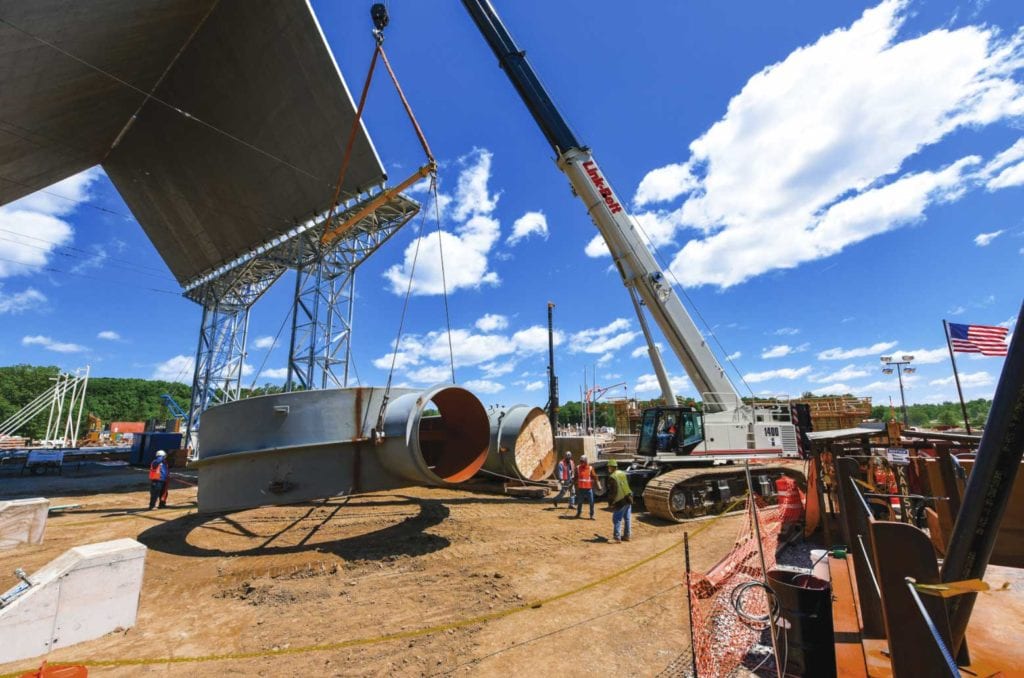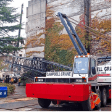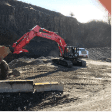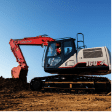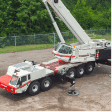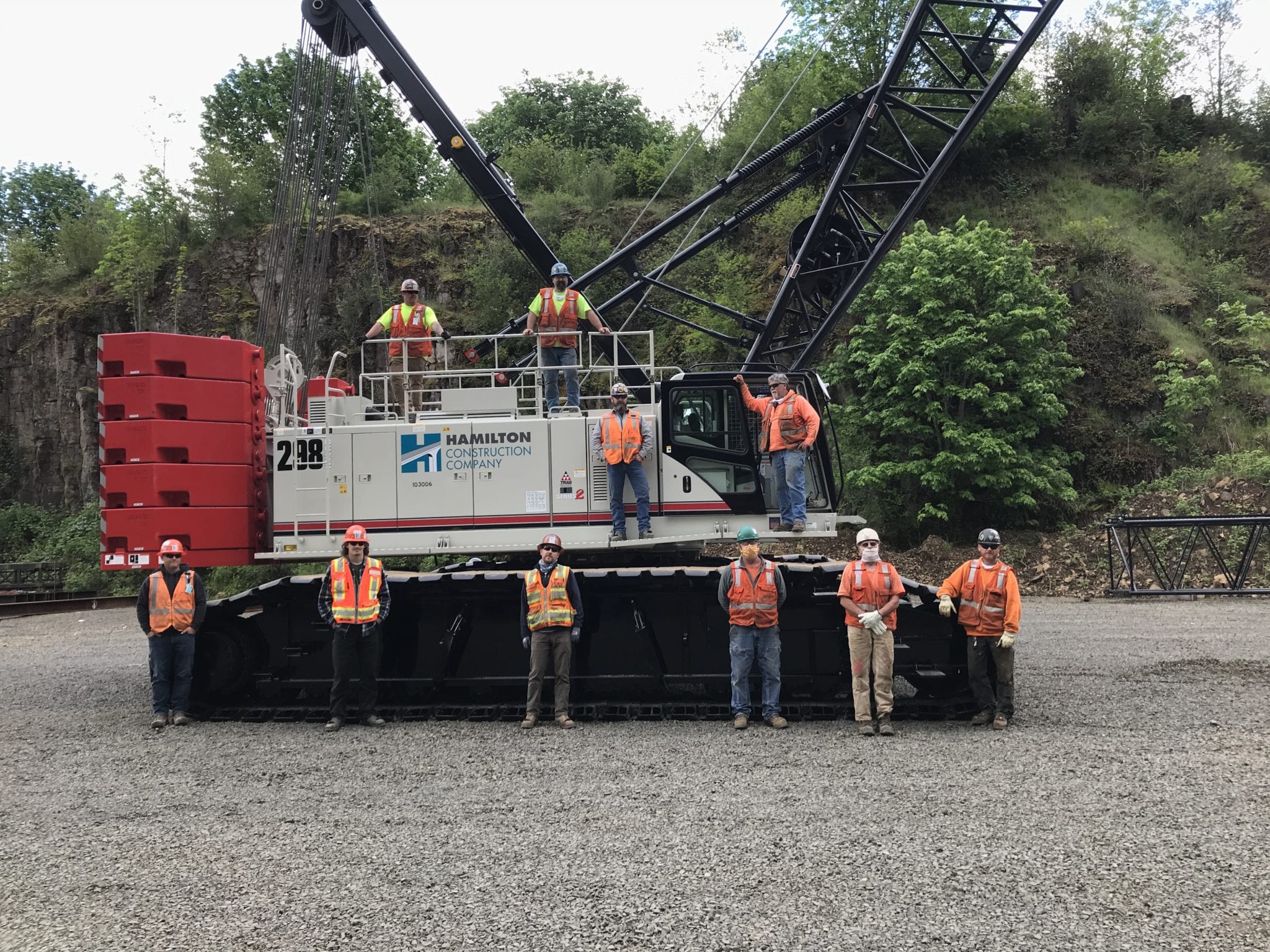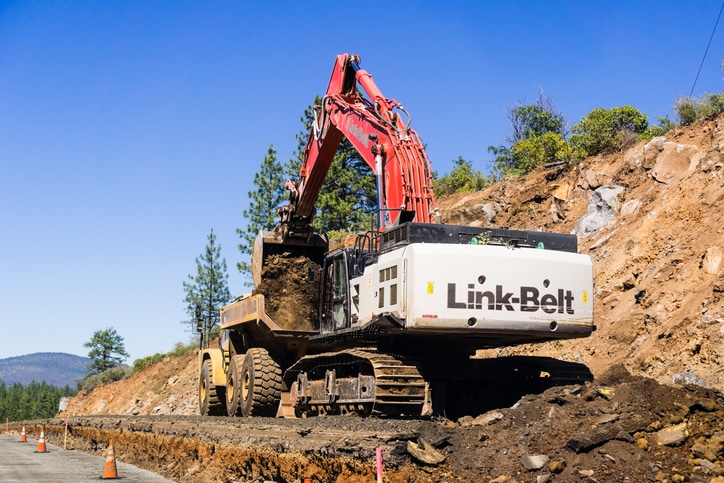For thousands of years, cranes have been used to make work more efficient and, in turn, more productive. Whether building temples in ancient Greece or skyscrapers in Seattle, cranes are used to lift hundreds of tons of materials hundreds of feet in the air. Many structures couldn’t be built without the help of cranes.
Cranes aren’t just used on the big construction sites, either. Smaller cranes, such as truck cranes, are just as valuable to move materials or equipment into position. In fact, those gargantuan tower cranes can’t be built without one of their smaller cousins lifting their components into place. No matter the size of the crane, how much or little it can lift, there’s one thing they all have in common.
Crane Safety
Link-Belt Lattice crawler cranes can lift very heavy loads – ranging from 80 tons to 300 tons. But even one ton of materials or equipment, dropped from just 10 or 20 feet, can cause a whole lot of problems. This is especially true if safety precautions around the site aren’t followed, equipment isn’t maintained, and/or crewmembers and other personnel aren’t prepared.
While the crane operator is responsible for how they use the equipment, the planning of each and every lift should happen in the days – if not weeks – before. Starting the day with quick inspections of the crane, rigging equipment, and other equipment will ensure smooth lifts. Finally, an operator and their spotter should review all conditions before any lift.
Planning a Safe Lift
Although every lift needs to be planned out, “critical lifts”, (where load on hook exceed 90% of the crane’s lifting capacities) need a little more attention to detail. Obviously, you need to have the right crane for the job based on the manufacturer’s specifics. But beyond the capabilities of the crane, the worksite needs to be considered.
The lift engineer will map out the lifting area, looking at objects that can be moved and which are stationary. This will include other work vehicles and equipment, pedestrian walkways, overhead power lines, and other obstacles. By removing as many items from the lift area as possible, the lift becomes more streamlined.
However, some things can’t be planned for. Although weather reports can be checked, sudden gusts of winds or wet conditions can alter a lift plan immensely. A good rule of thumb: if the wind is blowing more than 20 miles per hour, consider halting the lift until the weather becomes more friendly.
Safe Crane Operation
While some of these precautions may seem like common sense, it never hurts to review proper lifting protocols during the job. When one false move can lead to a damaged load, injury, or even death, NO precaution is too minor. Operator certification should be reviewed at the appropriate intervals.
WORKING RESTRICTIONS: Be aware of working range restrictions. The operator should always consult the OEM limits of the crane they are using.
LEVEL THE MACHINE: A 3-degree tilt can reduce capacity by over 50%, so ensure the crane is even. Depending on the lifting angle, the slightest tilt could lead to the crane tipping over, too.
DECREASE CENTRIFUGAL FORCE: Watch out for centrifugal force while swinging. Don’t be in a hurry when moving the load from side to side – it could lead to potential hazards.
DON’T SIDE LOAD THE BOOM: Never use the boom to pull a load sideways. Either move the load into the proper position or move the crane into position if possible.
DON’T LEAVE A LOAD SUSPENDED: Never leave a load suspended, it may fall. There is no reason to stop a lift halfway whether it’s lunchtime or not!
WATCH OUT FOR POWERLINES: Stay away from power lines. Although this should have been discussed during the planning stages, the operator and spotter always need to be aware of their surroundings.
DON’T RIDE THE LOAD: Never let anyone ride the load lift. Hopefully, this has never been an issue with your crews.
ALWAYS KNOW THE LOAD: Know the weight of the load before attempting to lift it. Again, each load should be planned out well before any lift, including how it will be gathered, rigged, and attached to the lifting hook. But the operator should always know just how much weight is at the end of their crane.
As always: No matter what type of crane you’re operating, always consult OEM / Operation Manual for safety information, including maintenance schedules. Triad Machinery also recommends anyone involved in a lift take continual crane safety training. As in any construction or industrial work, an ounce of prevention is worth a pound of cure.
Triad Machinery is the exclusive dealer of Link-Belt cranes in the Pacific Northwest. In addition to new and used sales, we also offer rentals as well as parts, attachments, fluids, and more for your crane needs. Looking for something in particular? Find the branch nearest you and give them a call. We look forward to working with you.

